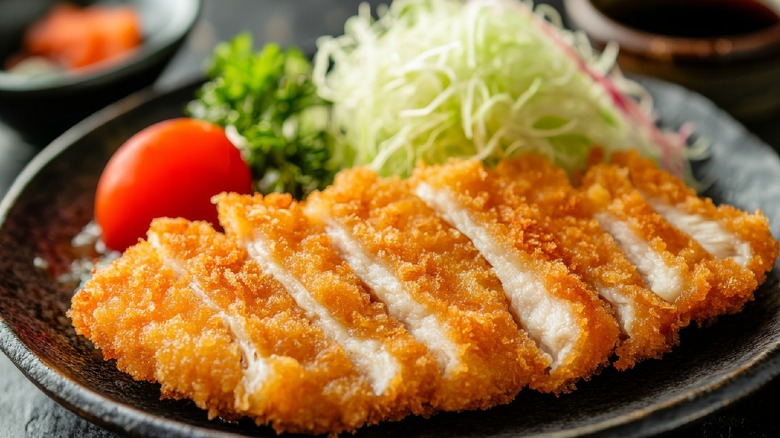The Prep Mistake That's Giving You The Worst Chicken Cutlets
Chicken shines in many forms, but there's a special simple appeal to a breaded cutlet. With a crispy exterior and succulent white meat inside, it's an easy-to-love showcase of the protein. Generally, the dish's assembly is straightforward. Pound the poultry thin, then season, cover in bread crumbs, and fry in hot oil. Yet even in such a series of steps, there are a few pitfalls to keep an eye on, starting from the butchering phase with the mistake that causes burnt cutlets.
Another especially prominent mishap occurs during the prep phase: Not removing fat, sinew, and skin adhered to the bird. Although edible, with their tough, chewy consistency, these chicken scraps are not the texture you want to bite into inside the breading. Furthermore, their tight structure acts like a binder, pulling together the meat whenever you attempt to tenderize it. As a result, flattening the meat with a mallet won't be quite as effective. So although these bits may seem like just a few discolored structures and you may be tempted to skip this step, know they'll have a profound effect on the end result of your chicken dish if not removed.
Remove sinew, fat, and skin while prepping chicken cutlets
Figuring out a way to remove the scraps may seem tricky since you'll want to preserve the chicken cutlet's shape. Start by tackling the butchering process with a knife. Carefully cut away fat and skin on the exterior, and if dealing with thighs, make small indentations to remove the tissue in the meat. If there's a long tendon lodged deeper in the chicken — an issue that happens frequently with tenders — then grip the chicken with a paper towel, and use a fork to pull it out. Like with chicken sandwiches, thigh or breasts produce different cutlets, but both will work. However, you will need to adjust your butchering technique per cut.
Careful cleaning combined with evenly cut chicken slices will yield the tastiest result. Serve them on their own, or enhance them with Bobby Flay's tip for the best chicken parm. Once you become accustomed to the process, it's easy to fry up round after round, making cooking a whole batch of tender chicken a stress-free process.

